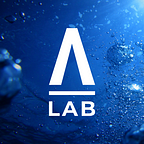What’s important to our community of senior water professionals is what drives everything we do in AquaLAB. We asked our community and the water industry what your top challenges are and you have responded!
Take a look at the top 5 challenges from water utilities:
[Survey — Top 5 Challenges in the Water Industry]
Data
We had an inkling that data was important for the water industry, but it stands out above the rest as being the biggest challenge.
As water utilities are installing more smart meters, remote sensors and connected assets, their data load is growing exponentially with every passing minute. Whether the data is fuel for better insights on their operations and customers, or just exhaust coming out the end of the data engines depends on how the data is being utilised and fed into other applications and decision-making.
We are also seeing more examples of utilities using data-sharing to collaborate with consumers and water users. The Water Insights portal developed by WaterNSW to empower agribusinesses and safeguard environment water makes priority information such as river flows, dam storages, and water availability openly accessible.
One of the key issues with data is the need for utilities to prioritise cyber security. Data needs to be hack-proof and reliable. The only way to ensure that is to make sure cyber security planning is integrated with digital transformation initiatives and not just an add on.
Listen to our podcast episode on Cyber Security in the Water industry here.
However, those utilities in our community that have embraced digitising their water network are starting to reap the rewards in better information and better management and maintenance practices. This is saving them money, time and improving safety.
Efficiency
Efficiency remains a key priority for water utilities and large water consumers, along with cost reduction. The AquaLAB Connect community has avidly discussed experiences with pipe condition monitoring technologies and IoT-enabled assets that help to improve asset efficiency and management needs. Members have shared their ups and downs navigating new territory as there are huge benefits with the specialty technology, but also difficulty managing integrations with existing data applications.
The general consensus is that efficiency is at the heart of long term water security and keeping costs down for consumers. The level of investment needed to implement more efficient water networks is often what holds utilities’ back, particularly in the public sector (which is the case for all Australian utilities).
Customers
Customer-centricity is starting to become a familiar term in water utility and council strategic frameworks. Relationships with customers are changing from utilitarian ‘service providers’ to joint community’s health and wellbeing custodians. Conserving water is seen as a shared responsibility, so empowering customers to be part of discovering and implementing strategies for long term water security is highly important.
Population growth has also challenged cities and towns to rapidly improve the service, accessibility and affordability of essential services. South East Water’s Five-Year Customer Commitments report lays down how they focus on what their customers value the most. This guides important business decisions for South East Water such as helping their customers to keep debt down, or investing in pipe blockage sensor technology that minimises outages and customer inconvenience.
Planning
‘Unpredictable’ could be the tagline for the 21st century, and particularly this year, with the pandemic and extreme weather across the globe pushing people and our planet to the limit.
Conversations around planning inside AquaLAB Connect have largely focused on water security and integrated water management. Most agree that traditional approaches to planning have been thrown out the window. Planning must now be adaptive, inclusive and based on a systems thinking approach.
Coming soon: For more on planning for long term water security, catch our next episode of Future Water where we talk about planning for long term water security in the face of Climate Change. Subscribe to your platform of choice here.
Workforce Development
[Source: Facebook]
The #istayatwork hashtag has been a hit across social media, celebrating the everyday heroes in the water industry. It is a brilliant user-generated campaign and a reminder that people are essential components of our water infrastructure. Even as utilities are exploring digitisation and technologies to improve efficiencies and reduce cost, investing in the future of the workforce must continue to be a priority.
We are anticipating a capital development surge in the coming years as part of many countries’ economic recovery plans and employment stimulus strategies.
The need for skilled frontline as well as digitally-capable workers will grow, but not all current workers will have the right skills for the jobs that are required. Leadership commitment to upskilling and reskilling workers, creating valuable career pathways and an inclusive workplace will be critical to building a resilient and innovative workforce.
Looking ahead, how is the water industry preparing to attract young job market entrants over the next decade? With education institutions severely impacted by enrolment shortages due to COVID-19, how do we ensure that we don’t miss out on skilled talent when approximately a third of our current engineering workforce is approaching retirement? This battle for talent is a prime opportunity for collaboration that AquaLAB is keen to explore further.
In the coming months, we will be focusing on uncovering fresh ideas, innovative cross-sector technology and unique approaches to inspire and support senior water industry leaders in their roles.
What are the top challenges you are facing in the water industry? The survey is still open — click here to answer now!
Follow the AquaLAB LinkedIn page for more insights and inspiration.
